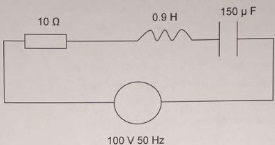ASSIGNMENT OBJECTIVES
In this assignment, for the Pass criteria, you will need to show that you can:
L01.1 Use estimation techniques and error arithmetic to establish realistic results from experiments.
L01.2 Convert number systems from one base to another, and apply the binary system to logic circuits
L01.3 Perform arithmetic operations using complex numbers in Cartesian and polar form
L01.4 Determine the powers and roots of complex numbers using de Moivre's theorem
L01.5 Apply complex number theory to the solution of engineering problems when appropriate
Task 1
(a) Dave the engineer is attempting to check the resistance of a resistor in a circuit that is faulty The voltage across the component is measured to be 2.1 V, and the current through it to be 0.25 A.
Using the principle of upper and lower bounds, determine the maximum and minimum values and hence the range of values the resistor could possibly be
(b) Another engineer, Bob, measures an equivalent resistor in another circuit. Bob reports the voltage across this component to be 2.4 ± 0.2 V and the current as 0.27 ± 0.01 A.
Based on these experimental findings, estimate the mean resistance and its error.
(b) A sample of 10 similar suspect resistors is taken and their resistances are measured directly. The data is shown in the table below:
|
Resistor
|
A
|
B
|
C
|
D
|
E
|
F
|
G
|
H
|
I
|
J
|
|
Measured resistance 0
|
2.3
|
2.6
|
2.4
|
2.2
|
2.3
|
2.1
|
2.4
|
2.3
|
2.2
|
2.4
|
Estimate the mean resistance for the sample, and the standard error in this estimate.
Task 2
Dave is de-bugging a computer program that has been written in 32-bit binary machine code. He eventually wishes to convert the instruction set from binary to hexadecimal to run on a faster and more up-to-date processor. Your job is to help him. A 2-line section of the program is shown below along with an extract of the operation codes:
|
OPERATION
|
1ST
ADDRESS
|
2ND
ADDRESS
|
STORE
ADDRESS
|
|
00100100
|
11110000
|
10000010
|
11111110
|
|
00100101
|
11111011
|
11111111
|
11000001
|
|
Decimal Operation Codes
|
|
|
DIVIDE
|
30 |
|
ADD
|
36 |
|
MULTIPLY
|
37 |
|
SUBTRACT
|
40 |
|
MOVE
|
50 |
|
JUMP
|
66 |
|
SHIFT RIGHT
|
22
25
|
|
SHIFT LEE!
|
(a) To practice converting between number bases, Dave suggests you start by converting the following numbers to (i) binary, and (ii) hexadecimal using techniques with which you are familiar: 24010 and 19310
(b) By converting the machine coded instructions to decimal (see above), identify three errors in the program segment, and correct them. Write out the corrected program code in binary.
(c) Take your corrected instructions and convert them fully into hexadecimal. Write down the new hexadecimal instructions.
(d) Bob is developing a 3-input microprocessor logic circuit to perform the Boolean function:
X‾YZ‾ + (XY)‾Z+XYZ‾+XY‾Z
By representing this function on a Karnaugh map, simplify the function.
(e) Draw a logic circuit to represent the simplified function.
For part (d) your Karnaugh map should be presented clearly/fully and professionally using squared paper, and should indicate precisely the means by which you were able to simplify the function
For (e) your logic circuit should be presented clearly on squared paper using the correct logic symbols. It should be drawn professionally, and all input and output signals should be clearly visible.
Task 3 YOU MUST ANSWER ALL PARTS (a) to (c)
Bob is trying to show Dave how complex numbers can be used to represent voltage and Current in AC waveforms. A particular circuit has the characteristics shown below:

L01.3 Calculate the current flowing in the circuit and its phase angle with respect to the supply voltage. Your answers should be as complex numbers in both rectangular and polar form.
Calculate the true (real) power dissipated by the circuit.
L01.4 Use DeMoivre's theorem to find the square of the current flowing in (a) above in polar form.
L01.5 Calculate the magnitude and phase of the voltages across the resistor, inductor and capacitor.